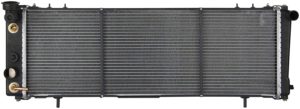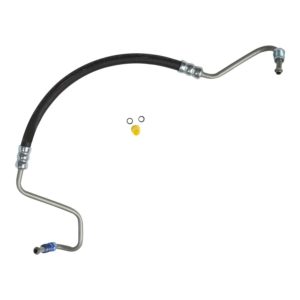Pinion Alignment with Axle Shims on a Jeep Cherokee
When lifting a Jeep Cherokee, the pinion angle changes relative to the transfer case. The alignment must be within the limits of the universal joints to prevent driveline vibrations.
One method of adjusting the pinion angle is to use angled shims. These shims are placed between the spring and the spring perch to rotate the pinion to match the drive shaft.
When a Jeep is lifted three inches or more, the drive shaft angle exceeds the recommended limits for the universal joints. A common method to correct the alignment while retaining the stock drive shaft is to drop the transfer case one inch and use two degree shims or use angled lift blocks like the Rough Country Lift kit includes.
In order to eliminate the misalignment, a Slip Yoke Eliminator kit is often used on the rear of the transfer case. Several versions are available for the NP231 that replace the output shaft with a stronger, shorter shaft giving multiple advantages for one simple modification.
With a Slip Yoke Eliminator kit installed, the standard drive shaft is replaced with a double cardon type like the one used in the front of the Cherokee. In fact, if you have an automatic transmission, a stock front shaft can be used in the rear with a SYE conversion.
The double cardon type shaft however uses a very different alignment from the standard shaft. Quite a bit of axle rotation is needed to align the pinion.
In the standard configuration, the pinion and the transfer case are aligned to be parallel to each other. The idea is to have the same operating angle for both universal joints on the drive shaft.
The double cardon shaft uses a special joint with two universal joints at one end and a singe joint at the other end. The correct alignment is to have the drive shaft parallel to the pinion and the entire angle is made up in the two joints on the opposite end.
For a three inch lift, I found about 8 degrees of shim was needed. This Jeep was fitted with two degree blocks so adding six degrees of angle to the spring pack brought it into alignment.
To calculate the shims needed, you will have to use trigonometry. However it is not too bad using this simple method.
With the transfer case and axle in place, I mounted the drive shaft. The misalignment was immediately evident. I placed a straight edge along the bottom of the pinion and parallel to the pinion shaft. I then measured the distance from the drive shaft center to the top of the straight edge. In my case, I measured to a point 30 inches up the shaft and found it need to be raised three inches to make it line up.
Now divide the distance it is off by the distance up the shaft. In my case it was 3 divided by 30 or 0.1.
To convert this number to the angle, you need to take the arctangent of the number. This is easily done on a scientific calculator or even easier to do using Google. In my case I typed arctan(3/30) in degrees into the Google search line. Google returns this result: arctan(3 / 30) = 5.71059314 degrees. Round it to the nearest degree and try that shim. In my case a six degree shim was really close and worked fine.
To install the shim, you have two options. If you get a steel shim, you can weld it to the spring perch making it a permanent part of the axle. I chose to add it to the spring pack so that it can be easily changed if I want to add longer shackles or different lift blocks.
To install the shim in the spring pack, you will have to disassemble the spring pack. It is generally a good idea to replace the center pin and the shim kit came with new center pins. So you can just cut off the nuts from the center pins. They are often impossible to unbolt due to dirt and corrosion.
Begin by removing the U bolts that hold the axle to the spring. Separate the spring from the perch. Next, use two large C clamps to hold the spring pack together while you remove the center bolt.
Place the new bolt through the shim and then pass the bolt through the spring pack. Tighten the nut. Be sure the fat end of the shim is to the rear to rotate the pinion up for the Cherokee. Align the pin with the block or spring perch and press it back together with a floor jack under the axle. Cut off the excess bolt length on the center pin.
Reinstall the U bolts and tighten them to the proper torque. Give it a good whack with a hammer to make sure every thing seated right and recheck the torque. It is good to recheck the U bolts after the first run as they sometimes move around on the axle tube and loosen up.
Verify the alignment visually or with a straight edge. If it looks right, congratulations! Put the wheels back on and give it a test drive.








